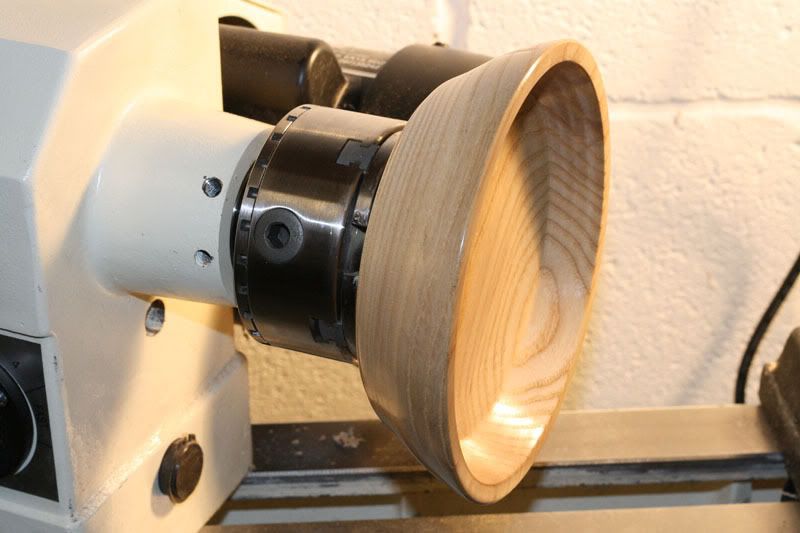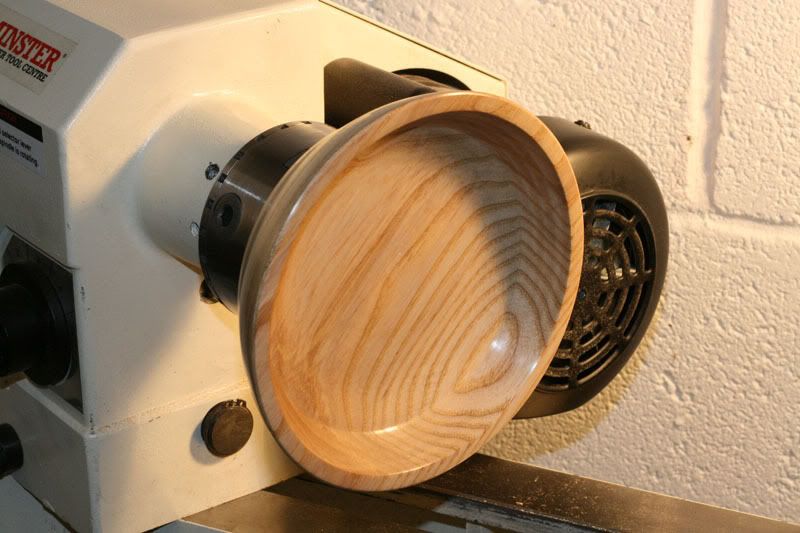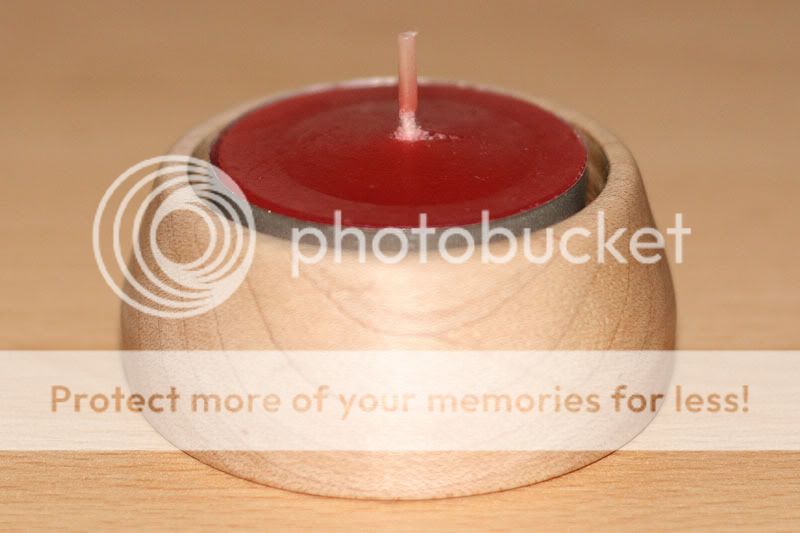santiniuk
Established Member
Well after pestering you all for guidance I'm finally ready to contribute a little with my 1st turnings.....
I feel like I'm making progress, sharpening isn't the nightmare it used to be and I feel like I'm controlling the tools a lot better. Still not perfect by a long way but I'm seeing some nice shavings at times
Today I tried a piece of Ash that I had obtained from a local guy on ebay.
I just wanted a very simple platter shape and also wanted quite a thick edge. (It is to be used in my kids playroom and is guaranteed to be abused and dropped!)
I only used a bowl gouge and used a scraper for a couple of very light passes on the inside bottom.
I then sanded a couple of grades and finished with some fine wire wool.
Overall I'm pleased with my effort. Style isn't important for me at the moment, its the feeling of being in control of the tools. The photo's show it with one coat of danish oil. This has highlighted the inside sides have 'scores'. I couldn't see them before as everything was really smooth.
Any tips on what I should do to prevent these score lines in the future ?
Thank you.


I feel like I'm making progress, sharpening isn't the nightmare it used to be and I feel like I'm controlling the tools a lot better. Still not perfect by a long way but I'm seeing some nice shavings at times
Today I tried a piece of Ash that I had obtained from a local guy on ebay.
I just wanted a very simple platter shape and also wanted quite a thick edge. (It is to be used in my kids playroom and is guaranteed to be abused and dropped!)
I only used a bowl gouge and used a scraper for a couple of very light passes on the inside bottom.
I then sanded a couple of grades and finished with some fine wire wool.
Overall I'm pleased with my effort. Style isn't important for me at the moment, its the feeling of being in control of the tools. The photo's show it with one coat of danish oil. This has highlighted the inside sides have 'scores'. I couldn't see them before as everything was really smooth.
Any tips on what I should do to prevent these score lines in the future ?
Thank you.









